Additives. The buzzword that everyone talks about but that no one seems to want. Whether it’s Cognac, Scotch whisky, rum, Bourbon, mezcal, etc. the use of additives is permitted but widely discussed in spirits circles – and usually not in a positive light. As it relates to Cognac, what additives are allowed? In what quantities? How are they measured? And how does Cognac’s additive use relate to that of other spirits, and even other beverages commonly present in our daily lives?
The aim is to keep opinion minimal, instead focusing on explaining what the official documentation says about the issue, and how it is executed by Cognac producers today.
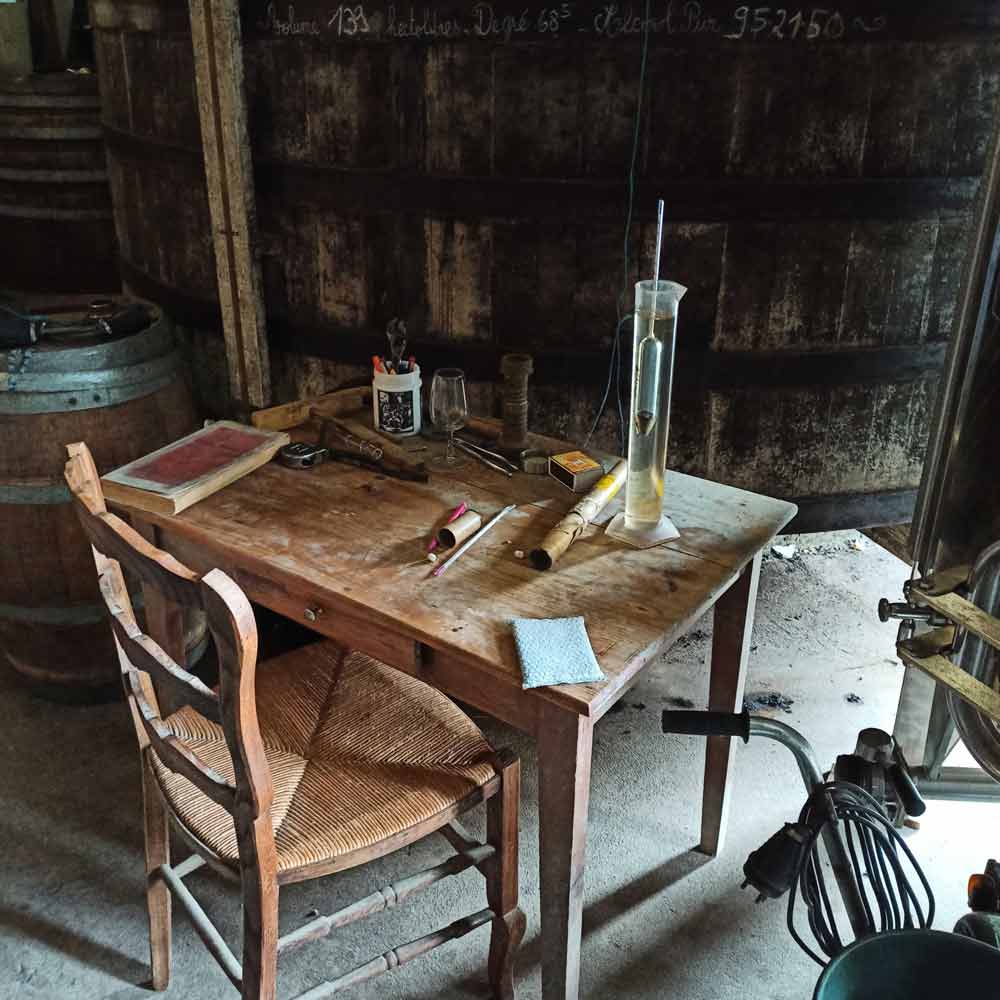
The one exception from my aforementioned note about opinion is that I’ll state that the discussion about additives is a good thing for Cognac, and spirits in general. It should be welcomed by producers as it can drive discussion about the production process of Cognac.
More discussion about Cognac production leads to increased awareness, knowledge, and appreciation of the spirit, which are all good things. And such conversations allow Cognac producers and Cognac enthusiasts alike to engage in a critical evaluation of the spirit. For a spirit to evolve and progress, one must engage in these discussions, which will allow the right questions to be asked and reflected upon.
I have found that what counts most is not whether a Cognac contains additives or not, but rather why those additives are included, or not included. I, like many, simply want to know what is in the bottle I’m drinking.
That concludes the small dose of opinion I felt compelled to get out. Now let’s take a look at what the official documentation says about the matter.
What does the Appellation Cognac Cahier des Charges say?
In a previous blog article, Age Statement in Cognac: It’s About Time, I wrote the following:
Generally speaking, a cahier des charges (pronounced: kai-yay de charge) is a document that serves as a sort of constitution for a particular type of production process. The document provides a general framework and rules structure for how the involved producers have to act while producing and bringing their products to market.
With regards to wine and spirits, common points in a cahier des charges are geographic denominations, guidelines producers must follow in the production of the particular wine or spirit, rules to protect against ambiguity, guidance, and details on how compliance with the rules is controlled.
Unsurprisingly, the Cognac Appellation has a cahier des charges.
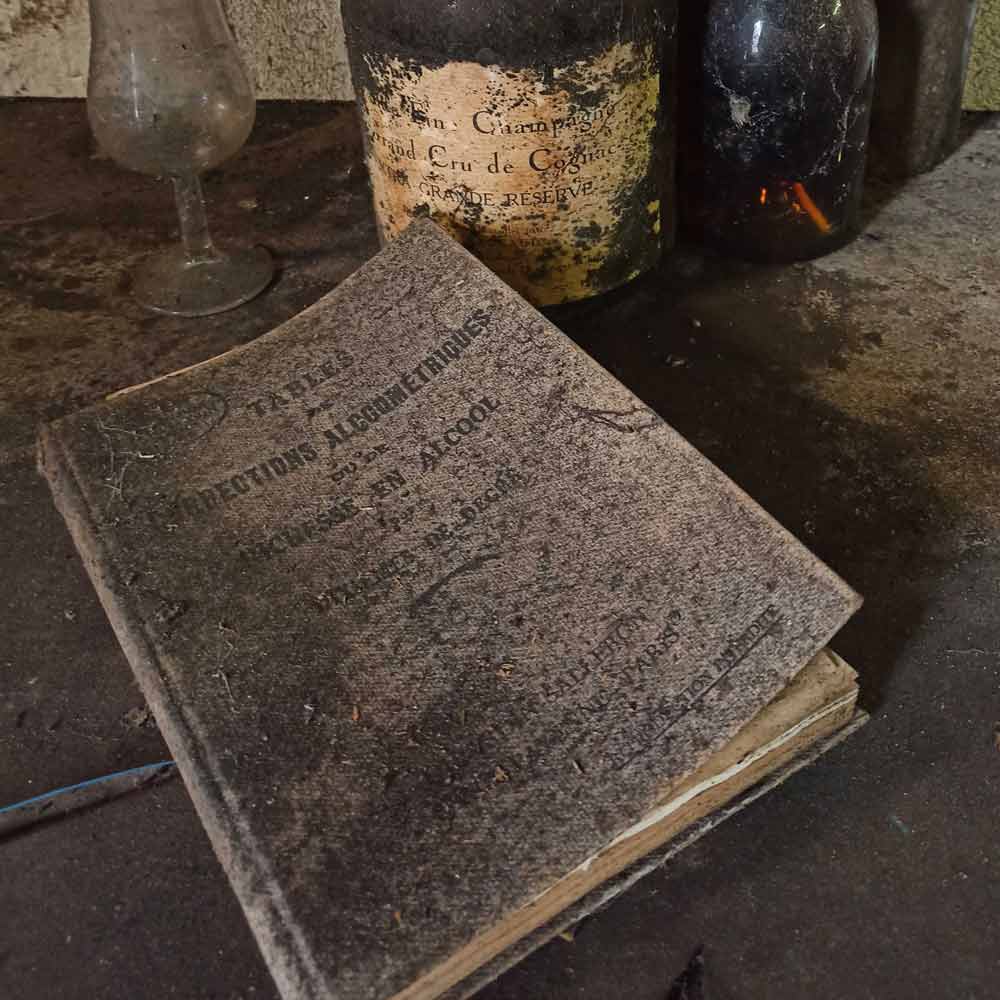
One interesting thing to note is that the Cognac cahier des charges makes no mention at all of additives; the word never appears in the document. However, additives are covered under the term l’obscuration (French for obscuration). What does the document actually say?
Point D – Description of the Production Method, Section N°10 Finishing specifically states (translated from the French):
The blending of eaux-de-vie of different ages and profiles is an inherent practice in the making of “Cognac”. It allows one to obtain a product with the precise organoleptic and harmonious characteristics searched for. The addition of an infusion of oak chips is one of the authorized traditional methods.
Only the coloring by using E150a caramel (ordinary caramel) and/or the addition of the oak chip infusion, and/or the addition of products defined in point 3a) and c) of Annex I of Regulation (EC) n°110/2008 of January 15, 2008 are authorized, so that the obscuration of the brandy remains inferior or equal to 4% vol. The obscuration, expressed in % vol. is obtained by the difference between the real alcoholic strength by volume and the gross alcoholic strength by volume.
And to continue, what are the authorized products defined in point 3a) and c) of Annex I of Regulation (EC) n°110/2008 of January 15, 2008? (Note that Point 3 is titled Edulcoration, which the Merriam-Webster dictionary defines as to make sweet; to free from harshness; to make pleasant.)
3. Edulcoration
“Edulcoration” means the use of one or more of the following products in the preparation of a spirit drink:
A: sugar, white sugar, refined sugar or refined white sugar, dextrose, fructose, glucose syrup, liquid sugar, liquid invert sugar, invert sugar syrup, as defined in Council Directive 2001/111/EC of 20 December 2001 relating to certain sugars intended for human consumption
C: caramelized sugar, product obtained exclusively by controlled heating of sucrose without the addition of bases nor mineral acids, nor any other chemical additive
For all intents and purposes, let’s classify the permitted additives as stated in the above points as follows: caramel coloring (E150a), sugar, and oak chip infusion. The oak chip infusion is commonly referred to as boisé.
Now, these three categories of additives are what is permitted to be included in the production process of the Cognac. Many of the Cognacs you may enjoy – and me too for that matter – will have some or all of these additives, in precise measured quantities. But the cahier des charges specifically states that the level obscuration must remain inferior to 4% vol. Some explanation is needed as to how this is calculated.
How is obscuration calculated?
Suppose a Cognac producer has just completed his or her blend of a new XO Cognac. The blend is ready and has been temporarily moved to a stainless steel tank to halt the aging process. Before bottling occurs, and therefore labeling, the producer needs to do a final check of the alcohol level. Knowing the exact alcohol level is obviously very important for that producer’s own internal inventory and stock tracking, but also for the calculation of alcohol excise taxes, and to print the proper alcohol level on the labels – amongst other reasons.

The producer would then place his or her alcoholometer (floating hydrometer) and thermometer in a graduated cylinder containing the new XO Cognac blend. Depending on the presence of the permitted additives, or not, and the temperature of the liquid, the alcoholometer will float to different heights. Generally speaking, a Cognac that is free of additives is less dense and so the meter will sink more. Contrariwise, a Cognac that contains additives will be more dense and so the meter will sink less, or float more. Temperature too will have an impact on how much the meter sinks or floats.
So the producer has placed the alcoholometer and the thermometer in the graduated cylinder, and he or she then reads the alcohol level from the alcoholometer and the temperature from the thermometer simultaneously, taking note of both. Then, using an Alcoolmetrie book, which contains tables showing alcohol levels as the rows and temperatures as the columns or vice versa, the producer will use the measured alcohol level and the temperature to find the gross alcoholic strength at 20° Celsius in the table. So essentially the table gives an alcohol strength at 20° Celsius even if the Cognac in the graduated cylinder is at 18.5° Celsius. The table does the conversion.
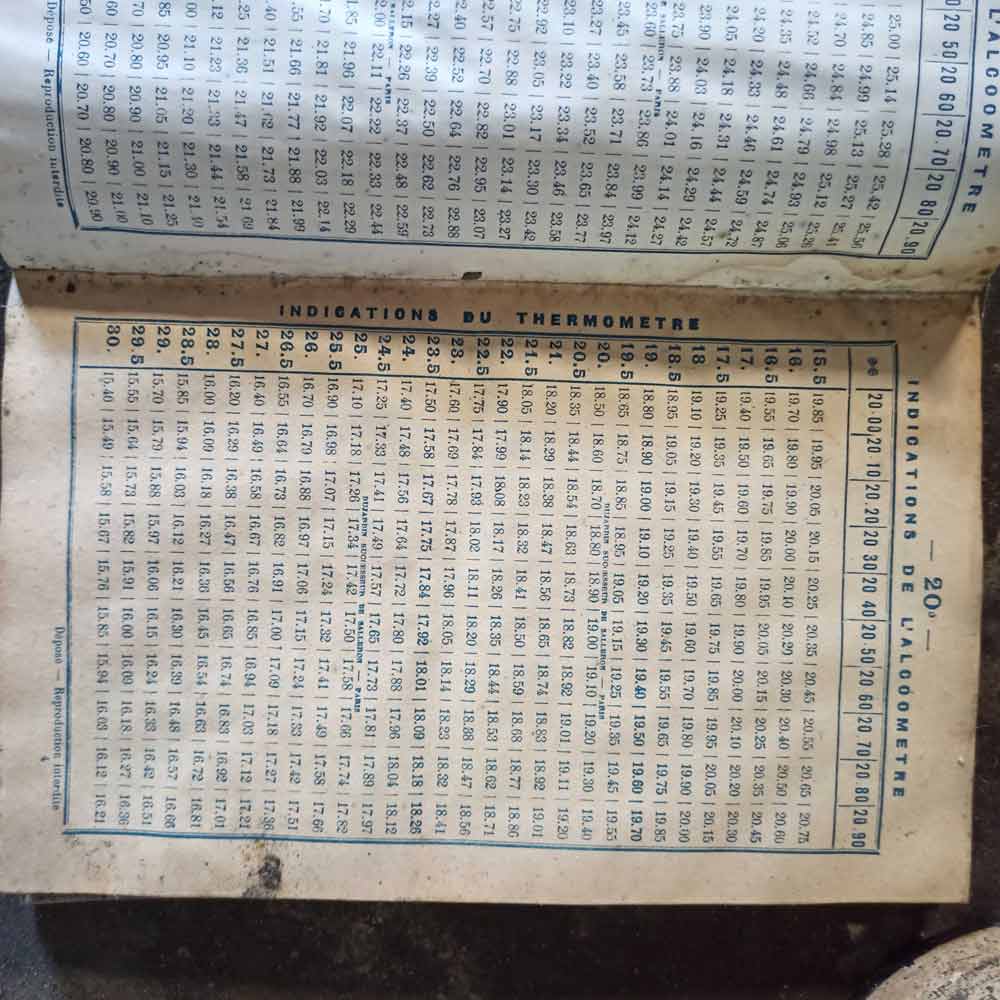
All of this can be done in the producer’s own cellar. Lab work is now required, though.
The producer will then send a sample of the same XO Cognac to the lab (There are labs all over the Cognac region, and France, specializing in exactly this kind of work). There, the lab can use various methods to determine the Cognac’s real alcoholic strength.
A screenshot of an actual lab report for a particular Cognac is shown below:

Notice how there is a slight difference between the gross alcoholic strength (titre alcoométrique volumique brut) and the real alcoholic strength (titre alcoométrique volumique réel)? The difference between these two numbers is the obscuration. The number must be under 4% vol. or else it cannot be bottled as Cognac.
In the screenshot example above, the real alcohol level is 40.23% vol. and the gross alcohol level is 37.41% vol. The difference of 2.82% vol. is the level of obscuration. It is very important to understand that the presence of a difference between these two numbers does not automatically imply the presence of additives.
True, adding sugar, caramel coloring, or boisé will help explain the difference in many cases, but there are plenty of other things in Cognac that can explain the difference between the two numbers – even if we do not know exactly what they are. This is precisely why the term employed is obscuration. It’s obscure to some extent.
To demonstrate this point, see the screenshot below. This is the lab report of a single cask Cognac bottled at cask strength with zero additives whatsoever. Notice how there still is a difference between the real alcohol level and the gross alcohol level? Here the level of obscuration is 0.60% vol. Something other than the permitted additives is causing the alcohol levels to differ. In a word, it’s obscure.

Finally, our Cognac producer with the new XO blend will now know the real alcohol level of his or her Cognac. Using the first screenshot above as an example, this would be 40.23%. Producers are able to state an abv level on the label plus or minus 0.3% of the real alcohol level. Consequently, the producer can label the new XO Cognac anything between 39.93% and 40.53%. However, the cahier des charges states that in order to be called Cognac, it must be bottled at a minimum of 40% alcohol. So the producer really can include an alcohol level between 40% and 40.53% on the label.
The producer opts for the standard 40%. Labels can be printed and bottling can proceed.
So what does this really mean?
It has been said that to reach a 4% vol. obscuration level, roughly 15-16 g/L of additives can be added. It is indeed quite rare to see obscuration levels actually reach 4%, with many Cognacs that I have seen being at or under the 2% level of obscuration. Of course, an additive free, or single cask cask strength bottling will have a very minimal level of obscuration.
How does this compare to other drinks we enjoy on a daily basis? For simplicity let’s just suppose that the additive used is sugar. The table below can provide some perspective, although I recognize making such comparisons is an imperfect exercise. Get out of this what you want.
Beverage | g/L sugar added |
Cognac | 0-16 g/L |
Brut Nature Champagne | 0-3 g/L |
Brut Champagne | 0-12 g/L |
Sauternes | 120-220 g/L* |
Coke | 106 g/L |
Coffee (1 standard cup + 1 sugar packet) | 16 g/L |
* Residual sugar, not actual added sugar
Reduction
Thus far in our exploration of obscuration and additives, we have only touched on sugar, caramel coloring, and boisé. But one other very important element can be added to a Cognac: water! When a fresh eau-de-vie drips off the still after its second distillation, it is between 70-72% alcohol.
In order to bring down the alcohol level of a Cognac, producers can add distilled water to do so. Many of us love a cask strength Cognac that has not seen a drop of water and is bottled at its natural alcohol level of say 49% vol. after 50 years aging in the barrel, but the truth is that for the vast majority of Cognacs, the bottling strength will need to be brought down by the addition of water.
A producer can add distilled water to do this, or the reduction can be done using what’s called the petites eaux, which is essentially water blended with some eaux-de-vie that has an alcoholic level usually under 40% vol. that too has been aged in an oak barrel for a considerable amount of time. It is not uncommon to hear producers who are aging some water in barrels to specifically taste each of their petites eaux to know what kind of oak and spice profile it can contribute to a Cognac when added for a reduction.
And in other spirits?
Now that obscuration has been explained, including how it is calculated, and what kind of additives can be included in a Cognac legally, it would be interesting to take a quick look at what additives other spirits are permitted to use. The list is not exhaustive, and I do not pretend for one second to be an authority on any of these spirits, so please comment if any of the following need to be amended.
- Scotch whisky: caramel coloring
- Bourbon: none
- Rhum agricole: none
- Rum: origin-dependent, but additives (sugar, colorant) generally allowed
- Tequila: glycerin, oak extract, sugar-based syrups, caramel coloring
- Mezcal: none

Of course, just because additives are allowed does not mean producers cannot opt to bottle pure, naturally presented products with zero additives. In fact, we are seeing this wave more and more across all spirit categories. Increasingly, consumers have better knowledge and awareness of what they are drinking and take pleasure from the fact that the spirit they are enjoying does not contain any additives. I do not see this movement going away any time soon.
Conclusion
In closing, this was never meant to be an assault on additives – quite the contrary. The goal was simply to inform and dig into the weeds on what the official documentation says on the subject. There are reasons why a producer would add a small measured amount of an additive to a Cognac blend, just as there are compelling reasons why another producer might choose to bottle additive free, low obscuration Cognac. No one is necessarily better than the other; they are two products on different branches of the same tree.
What’s true though is that there is a Cognac out there for everyone, regardless of where they are on their Cognac journey, and regardless of the presence of additives or not.
Cheers!

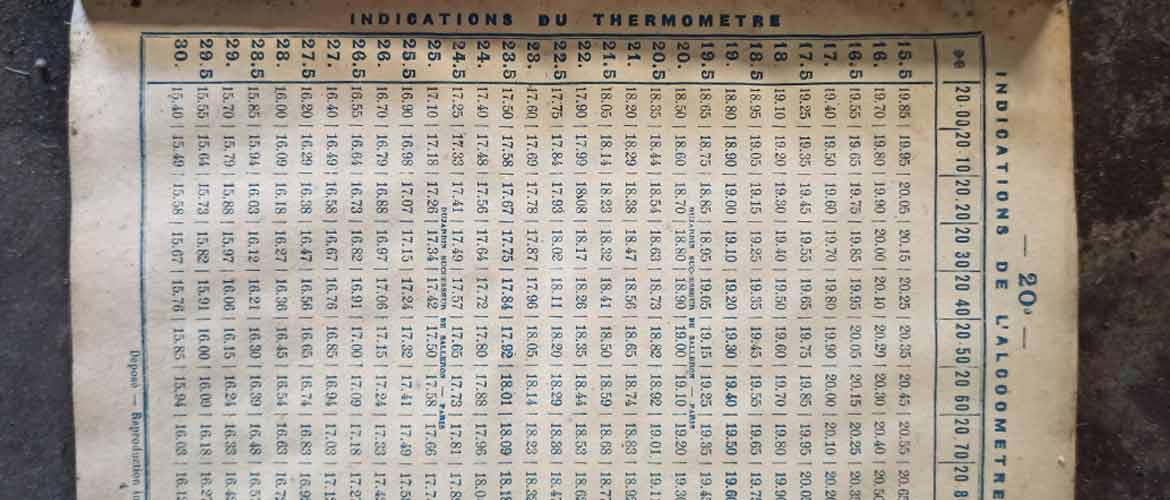
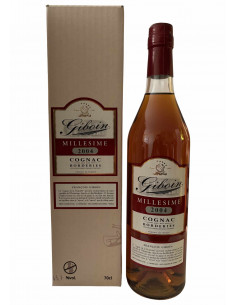
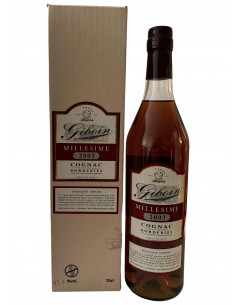
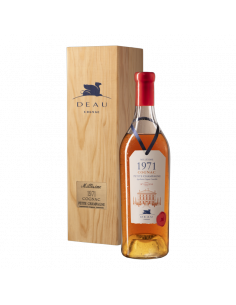



4 Comments
The question isn’t if traditional additives are good or not, I personally believe that additives are interesting, traditional, and natural. It’s a choice to add sugar, e150a, and boisé, which is absolutely not shameful. It makes sense, and some houses are working hard to produce and to age old boisé, sugars, etc. We do it for some cuvee under MESTREAU brand name, like our XO Borderies. It’s a chance for our region to have such qualitative additives permitted in the Cognac production. That’s said, it’s also a choice to not use boisé, sugar or E150a, and to work hard to make the Cognac round and smooth without these additives. It’s what we do with Grosperrin cognacs since 1999. Regarding obscuration, it’s simply important to understand that the ageing process also creates an obscuration which is natural. The level of obscuration will give you a good indication, but only if you consider the age of the Cognac.